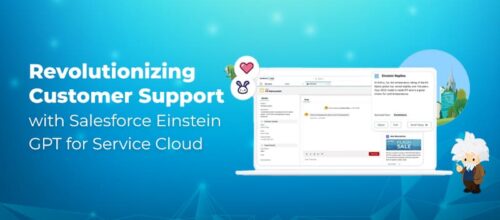Salesforce Commerce Cloud with Microservices Architecture
Lala Asif Allana
Director of Technology – SalesforceJanuary 6, 2025
Accelerate Your eCommerce Business with Salesforce
Home » Blogs » Salesforce » Salesforce Commerce Cloud with Microservices Architecture
Customers are an asset for any company and various services provided by companies need architectural efficiency to handle data and connections. The original architecture used standalone systems from which organizations have now moved on to cloud-based diverse systems. Cloud systems enable handling thousands of customers at the same time without putting all the load on a single server. However, technological advancements have bought out the problems in cloud architectures when a single monolithic unit handles various tasks.
Now organizations are moving towards a microservices-enabled headless architecture to take advantage of the flexibility and independence to modify existing systems. Microservices are capable of providing fine-tuned control to all aspects of the systems to make the customer experience better.

Salesforce and Microservices
Salesforce Cloud Commerce architecture has been a primary agent that satisfies many sizable organizations for their services. It provides many utilities that enable companies to hold their e-commerce stores and units. Companies are gearing towards microservices-based architectures. Salesforce with Microservices can significantly contribute to your architecture.
- Flexibility towards architecture: Monolithic architectures provide services that enable many aspects of business such as report generation, load management, shipping add-ons, and more. These baseline utilities are sometimes not enough for many organizations that are looking to fast-track their growth. On the other hand, microservices enable companies to whip up any service they deem necessary and connect it with their current architecture. The company can decide the bandwidth and features that they need from their architecture.
- Scaling and speed: Companies using monolithic architectures are limited by the platform when they need to expand. Salesforce provides many tiers through which organizations can expand and support more users. There can be limitations about speed and performance in areas such as admin dashboard and data import. Here is where the flexibility and speed of microservices implementation come into play. Organizations can decide what framework suits their requirements the best and plug & play those services into your existing architecture. Similarly, you can individually scale every part of your application through independent components.
Implementation of Microservices
Any organization looking to migrate its platform to microservices enabled systems; need to consider a few factors to make the migration process more efficient and streamlined.
Decide an implementation strategy
The first step in your planning should be to decide which component you want to change. This decision should be inspired by the technical requirements and business strategies that you have in place. There are various components of an e-commerce store that you can influence with microservices
- Order management system – The order management system is a critical part of an e-commerce store as it allows the company to process orders and connect with a payment gateway. While it is an important part, it can be positively influenced by microservices as you can add new components and scale previous ones to support customers in a better manner.
- Product information manager – PIM is responsible for storing the product data and providing an interface to modify the information as per necessity. It is often connected with various other components, which is why it may be difficult to implement it through microservices.
- Other components – Other components such as user interface and support services can be modified through microservices to create a better experience for the customer. Organizations can implement new frontend systems so that their storefront is more appealing to the customers, and they can also switch out the previous support system with a better standalone microservice.
Implementation and migration
To implement a microservices-based architecture, technicians must realize that they cannot instantly change the entire architecture from salesforce to microservices-based. They must switch from the previous component to an enabled microservices element by using an API gateway. These gateways enable you to replace the endpoints from salesforce to your new service when they go online. Furthermore, technicians may need to design a system that can carefully monitor the interfacing and connection between each of the components as the organization implements more and more microservices. After creating a middle layer, the next step is to import the data from Salesforce to microservices architecture. Also, based on the framework which you have used to create your microservice, you can import the downloaded data to your new microservice.
Testing and Maintenance
After you have created your desired microservices, it is important to analyze the performance and debug it wherever necessary. Technicians need to be careful about the connections between components and how they are maintained to avoid problems to potential and standing customers. Then, it becomes more important to maintain the quality of services that are being provided through the microservices architecture by doing regular load tests and more.
All in all, we can agree that microservices-based architecture can help in accelerating the e-commerce business if implemented intelligently. Although it may be hard to make a few initial migrations, it is a better strategy all over in the long run. It provides a fine-tuned control over each system and promises a better experience to the consumer that the company is catering to. Get in touch with Royal Cyber Salesforce experts to know more.
Author
Poonam ChandersyRecent Posts
- Salesforce Commerce Cloud with Microservices Architecture January 6, 2025
- SAP Commerce Cloud Platform is Simple, Faster and Scalable January 6, 2025
- Enhancing Salesforce B2C Commerce CMS with Page Designer Plus for a Streamlined Digital Journey January 6, 2025
- Transform Your Business with Royal Cyber’s Microsoft Expertise January 6, 2025
Recent Blogs
- Learn to write effective test cases. Master best practices, templates, and tips to enhance software …Read More »
- In today’s fast-paced digital landscape, seamless data integration is crucial for businessRead More »
- Harness the power of AI with Salesforce Einstein GPT for Service Cloud. Unlock innovative ways …Read More »



